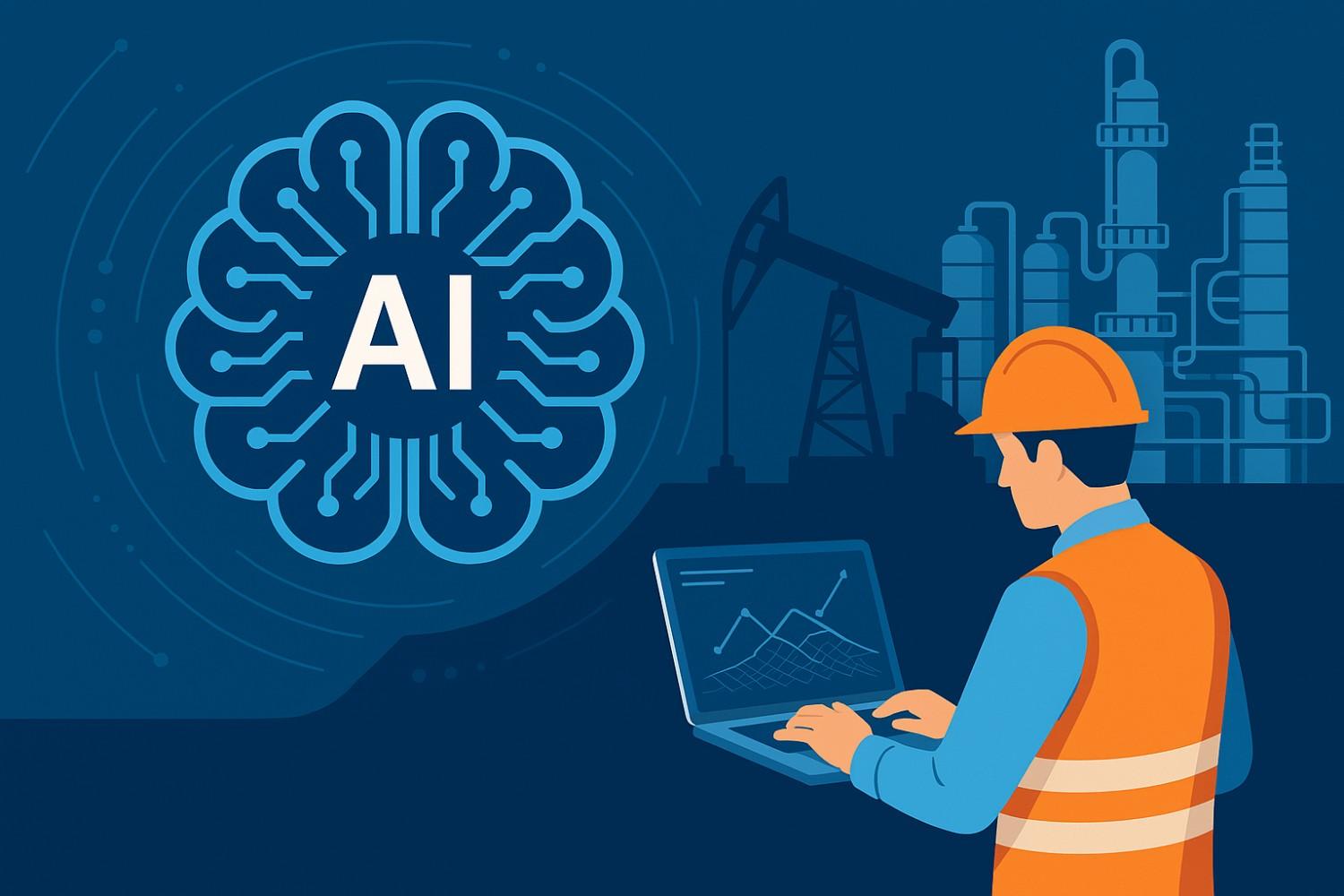In an age where milliseconds can mean millions in lost revenue, the industrial sector is undergoing a quiet revolution, one that’s driven not by bigger machines or pricier materials, but by smarter data. Imagine a factory floor where every motor, pump, and conveyor belt reports its status the moment something begins to go wrong; a pipeline that alerts engineers of corrosion build-up before a single drop of product is lost; a chemical reactor tunes its feed rates to maintain peak efficiency. This isn’t science fiction; it’s the promise of IoT-powered real-time monitoring and reshaping how manufacturers, oil & gas operators, and chemical processors think about uptime, safety, and profit.
Today, legacy maintenance schedules built on periodic inspections, manual logbooks, and gut instinct are giving way to dynamic, cloud-connected ecosystems. Sensors embedded at every critical juncture continuously stream performance data, AI-driven analytics spot anomalies in real time, and automated workflows trigger preventive actions without delay. The result? Unplanned downtime can be slashed by up to 50%, maintenance costs drop, and operational transparency soars, turning every asset into a proactive contributor to your bottom line.
Industrial operations have moved beyond periodic manual checks. By combining IoT remote monitoring with real-time monitoring, companies can track equipment health, optimize workflows, and reduce unplanned downtime.
In this article, we’ll look at what these technologies involve, how they compare to legacy approaches, the technology under the hood, and practical factors to consider when selecting a solution.
What is IoT Remote Monitoring?
IoT remote monitoring refers to deploying network-enabled sensors and devices on machinery, pipelines, vessels, or infrastructure to collect operational data continuously. These devices measure temperature, pressure, vibration, flow rate, and more, then send that data via wired or wireless networks to a central platform.
Key points to note:
- Data is captured without human intervention.
- Analysis occurs on local gateways or in the cloud.
- Alerts and reports reach engineers and managers instantly.
Real-time monitoring builds on this by providing live dashboards and automated alerts when a parameter crosses a threshold. Rather than waiting for an operator to run a report, a refinery can be notified of a pressure spike as it happens.
Consider a European wind farm operator who installed vibration and temperature sensors on turbine gearboxes. Data flows to a cloud platform every minute. When gearbox temperature rises above 85 °C, an SMS alert is sent to the maintenance team, avoiding potential bearing failure.
IoT Remote Monitoring vs Traditional Systems
| Feature | Traditional System | IoT Remote Monitoring |
| Data Collection | Manual gauges and logbooks | Automated sensors, continuous upload |
| Response Time | Hours to days | Seconds to minutes |
| Data Granularity | Spot checks | High-frequency streams |
| Analysis | Manual trend review | Automated analytics |
| Maintenance | Reactive | Predictive |
With a manual system, a plant engineer might walk the line twice per shift, record pressure and temperature, then compare readings over weeks. Faults often only appear after damage has occurred.
By contrast, a plant using IoT remote monitoring and real-time monitoring sees each temperature reading as it happens. Anomalies trigger ticket creation in the maintenance management system. Scheduling can shift from routine maintenance every six months to maintenance exactly when it’s needed.
How Does IoT Remote Monitoring Work?
Implementing IoT remote monitoring usually involves these steps:
- Sensor Installation
Sensors attach to pumps, compressors, heat exchangers, or pipelines. For example, ultrasonic flow meters track oil throughput; infrared sensors measure bearing temperature. - Connectivity Layer
Devices connect over Ethernet, Wi-Fi, cellular networks, or LPWAN such as LoRaWAN. A solar field in Arizona uses cellular links to send irradiance and panel temperature data to a central server. - Edge Processing
Gateways preprocess data at the site to filter noise, perform calculations (like moving averages), and raise local alarms if communications fail. - Cloud Platform or On-Premises Server
Aggregated data lands in a historian or IoT platform where it is stored and indexed. Advanced visualization displays trends, event timelines, and heat maps. - Analytics and Alerts
Built-in rules or machine learning for data analysis detect patterns indicative of wear, misalignment, or leaks. When a gearbox vibration signature matches a known failure mode, an alert is routed to technicians. - User Interface
Operators and managers access dashboards via web or mobile apps. Widgets show current values, recent spikes, and predicted remaining life of key assets.
For instance, A chemical plant adopted an IIoT solution that uses machine learning and artificial intelligence models to predict heat exchanger fouling. The platform recommended cleaning after 1200 hours of operation rather than a fixed schedule. Over one year, unscheduled shutdowns dropped by 30 percent, and energy use fell by 5 percent.
Suggeted Read: How IIoT is Revolutionizing Smart Industrial Processing
Key Components of IIoT in Smart Factories
The Industrial Internet of Things (IIoT) underpins modern smart factories. Here are critical elements:
- Advanced Sensors
Accelerometers, acoustic sensors, thermal cameras, and gas detectors capture various parameters. - Edge Computing Devices
These mini-servers perform initial data crunching close to the source, cutting latency and network load. - Integration with ERP and MES
Data flows into Enterprise Resource Planning (ERP) and Manufacturing Execution Systems (MES) so that maintenance work orders and production schedules update automatically. - Data Lakes and Historians
Long-term storage supports root cause analysis and compliance reporting. An auto maker stored two years of sensor logs and used them to resolve a gearbox issue that recurred only once per quarter. - Cybersecurity Framework
Secure boot, certificate-based authentication, and network segmentation isolate IIoT traffic from corporate IT networks. - Standards and Protocols
OPC UA, MQTT, and Modbus TCP ensure devices from different vendors can interoperate.
For instance, A pharmaceutical manufacturer implemented IoT artificial intelligence algorithms to detect leaks in solvent transfer lines. Acoustic sensors along the line fed sound profiles to a neural network that flagged weld defects. The system pinpointed a microcrack that standard pressure tests missed, saving $ 200,000 in lost product.
Benefits of IoT Remote Monitoring
Investing in IoT remote monitoring delivers measurable returns:
- Increased Uptime
Predictive maintenance based on data trends prevents unexpected breakdowns. A steel mill cut unplanned downtime by 22 percent in one year. - Cost Reduction
Reducing emergency repairs and optimizing spare parts inventory lowered maintenance costs by 15 percent for a pulp and paper mill. - Improved Safety
Gas detectors linked to real-time dashboards averted two major leaks in a petrochemical facility, protecting workers and the environment. - Compliance and Reporting
Automatic logging of temperature and pressure helps demonstrate adherence to industry regulations and quality standards. - Operational Visibility
Senior management gains a clear picture of overall equipment effectiveness (OEE) across lines, enabling data-driven investments.
Organizations aiming to modernize legacy operations and seamlessly integrate IoT technologies can benefit from our end-to-end Digitalization service, tailored to boost industrial connectivity and data-driven performance.
Scalability for Future Technology
An IIoT investment today lays the foundation for integrating robotics, machine learning, and advanced analytics in the future.
Key Considerations When Choosing an IoT Remote Monitoring Solution
Before selecting a provider, evaluate:
- Scalability and Flexibility
Can the system support hundreds or thousands of devices as you expand across facilities? Look for modular architectures. - Integration with Legacy Equipment
Many plants still run decades-old machinery. Solutions should offer protocol converters or retrofit sensors to bridge gaps. - Data Ownership and Access
Clarify who owns raw sensor data and whether you can export it for external analysis. - User Experience
Choose platforms with customizable dashboards, role-based access control, and mobile-friendly interfaces. - Vendor Support and Ecosystem
Ensure the vendor offers professional services for installation, training, and ongoing support. A strong partner network can simplify third-party integrations. - Security and Compliance
Confirm the solution follows IEC 62443 standards or similar frameworks. Review past security audits and penetration test results.
Below is a side-by-side comparison of a proprietary versus an open-source IoT monitoring solution, highlighting key selection criteria. Use it to gauge trade-offs in sensor strategy, integration, costs, and overall benefits.
| Criteria | Vendor A (Proprietary) | Vendor B (Open-Source) |
| Sensors | Must buy new, vendor-only temperature sensors | Use existing probes plus edge gateways |
| Network | Closed, vendor-managed network | Standard Ethernet/Wi-Fi with open-source protocols |
| Upfront Sensor Cost | Lower per sensor | Higher per sensor |
| Integration Effort | High custom wiring, special software | Low; plug-and-play with familiar tools |
| Staff Training | Lengthy new UI and procedures | Short; uses existing interfaces and open standards |
| Total Implementation Cost | Baseline | 25% lower than Vendor A (despite higher sensor price) |
| Key Benefit | Simplified procurement | Faster setup, lower overall spend, no vendor lock-in |
Conclusion
The combination of IoT remote monitoring, real-time monitoring, and IIoT and industry 4.0 technologies is reshaping industrial operations. Companies that adopt these tools gain better visibility, reduce maintenance costs, and improve safety. By understanding how the technology works, its benefits, and the critical selection criteria, you can make a confident decision that aligns with your operational goals.
Next steps:
- Conduct a pilot on a single production line to measure ROI.
- Define success metrics such as reducing unplanned downtime or maintenance cost per unit.
- Build a phased rollout plan that includes staff training and cybersecurity audits.
With the right strategy and partner, your facility can join the growing list of industries of the future that leverage IoT machine learning, IoT AI, and machine learning and artificial intelligence to achieve higher efficiency and resilience.
To ensure successful adoption and customization of these technologies, many organizations partner with specialists offering Engineering Consulting Services, enabling seamless integration and long-term support.



